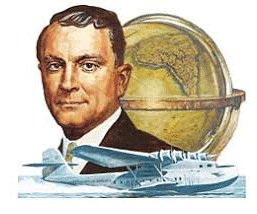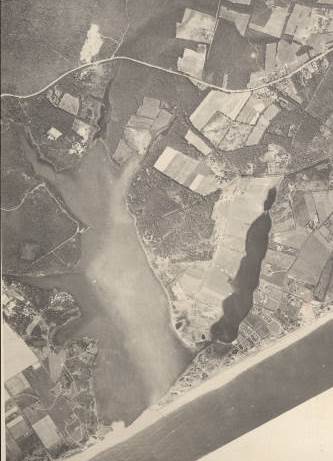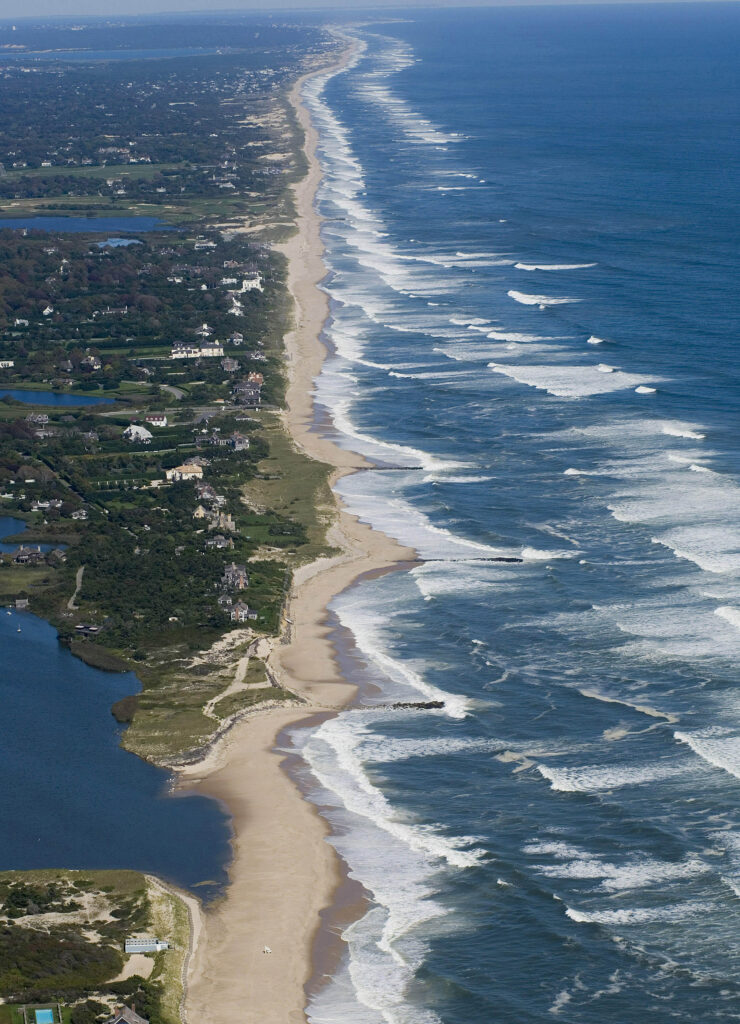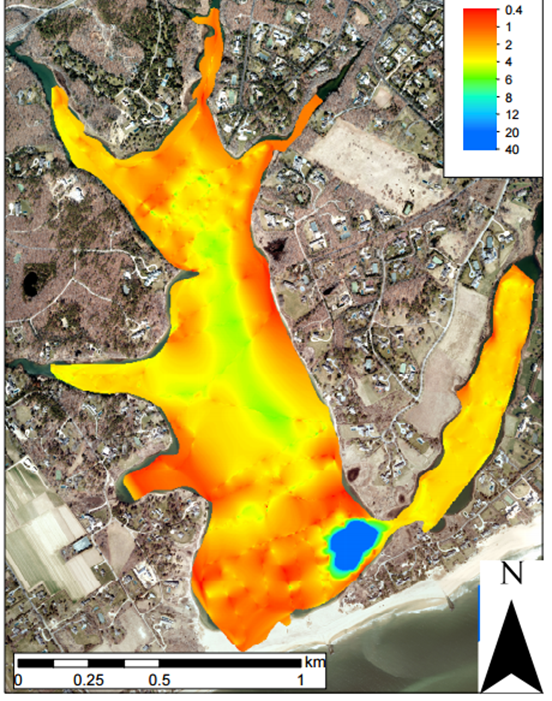“In one fell swoop, we have shrunken the earth.”
—Juan Trippe.

There is perhaps no single individual in recent history who had more of an impact on Georgica Pond than Juan Trippe. This may be surprising to some, but as an aviation entrepreneur and later the Founder, Chairman and CEO of Pan Am World Airways, he purchased a home on the ocean at the end of West End Road, where he and his family summered. It was reported in the East Hampton Star that he “tried to keep a low profile”. That did not last long and by the end of his life in 1981, he was responsible for the installation of three groins and excavating an enormous hole in Georgica Pond all of which still exist today. We are lucky that he wasn’t successful with some of his other engineering schemes, one of which was a drainage pipe to stabilize Georgica Pond.
Historically, there has always been a tension at Georgica Pond between people who want the pond’s water level low and people who want the pond level high. Sailors, crabbers, problematic basements and erosion all weigh into the mix. Today the emergence of harmful algal blooms is an added factor.
The idea of a permanent drainage pipe at the mouth of the pond was advocated by Mr. Trippe. At neighboring Hook Pond where the Maidstone golf course borders Hook Pond, periodic high water levels could make playing difficult. The Maidstone Club advocated, and the Army Corp of Engineers delivered, installing a drainage pipe at Hook Pond. President of the Club at the time? Juan Trippe. Mr. Trippe wanted Georgica Pond similarly tamed. The problem with the pipe is that the pond becomes fresh with no backflow of salt water or tidal flushing. The unique ecology of the brackish pond is lost and with it, the many species of fish, blue crabs and other wildlife not to mention a serious deterioration of water quality. Another pond that was stabilized with a pipe is Lake Agawam in Southampton Village. Today, Lake Agawam is one of the most impaired water bodies on Long Island. Fortunately, a new coalition of citizens and local elected officials are working together to restore the water quality there.

An aerial photo of Georgica Pond from the 1930s. Note the straight coastline. 
An aerial photo of Georgica Pond from 2006. Note the groins and the scalloped coastline. Photo by Doug Kuntz.
Mr. Trippe was known to be charming when necessary and was well connected at the highest levels of government. So after the hurricane of 1938 when his family was trapped at the end of West End Road, he started his campaign to build the groins. (Groins, are built in a series to stabilize a beach, while a jetty is built to stabilize an inlet). Groins would trap sand on the eastern side, intercepting the generally easterly flow of the offshore currents carrying lots of sand. By building up the beach using groins, West End Road was more protected from flooding and beach erosion. It wasn’t until the mid-‘60s that he was successful after the intervention of Governor Nelson Rockefeller. The groins have been controversial ever since.
During the construction of the groins, the Army Corp of Engineers excavated an enormous amount of sand from the pond bottom (a borrow pit) to anchor the second set of groins. The big hole that was created from this excavation is approximately 40 feet deep and some believe it acts as a refuge for overwintering pond life. Back in Trippe’s day, he would arrive by seaplane and the deep hole was a perfect landing place.

By the 1960s the Army Corp of Engineers had begun their 83-mile-long Fire Island to Montauk Point Study which, over the years has been partially implemented, abandoned, reformulated and is still under review today. Surely one of the most monumental government planning documents ever written. Along with drainage pipes and many other engineering solutions, the Army Corp proposed building a large dune over the sand bar that separates Georgica Pond from the ocean. The dune was originally proposed to be 14 ft. high and 25 feet across, but in a later iteration, the new dune grew to be 25 feet high and 150 feet across. Skeptics immediately saw that the Robert Moses vision for an ocean-view parkway could be possible. Having unleashed the Army Corp, Juan Trippe was now surely at odds with this new plan?
Fortunately, the ocean-view parkway was never built and seaplanes are no longer allowed to land on Georgica Pond.
